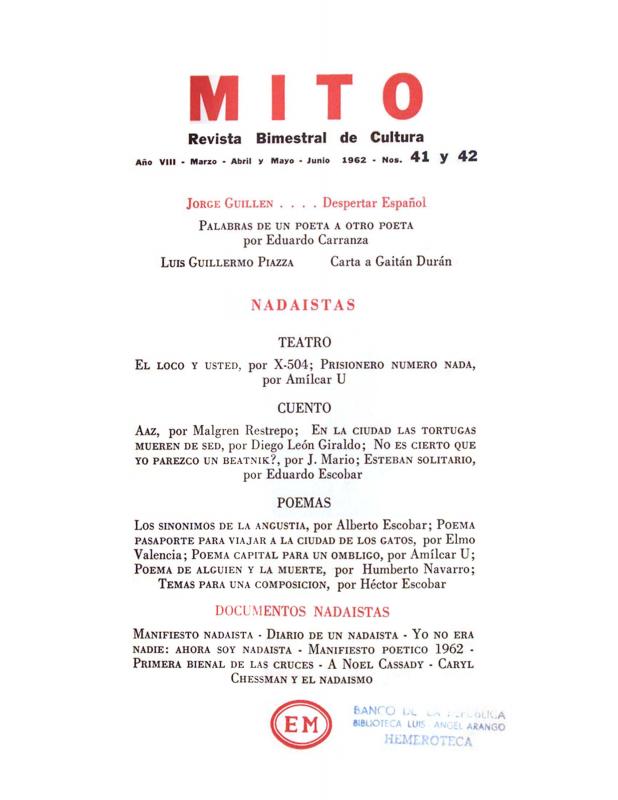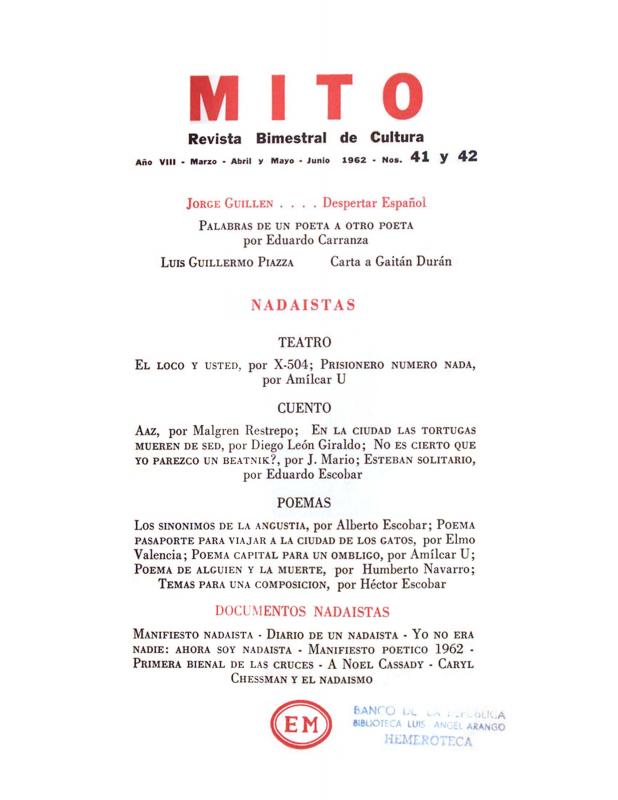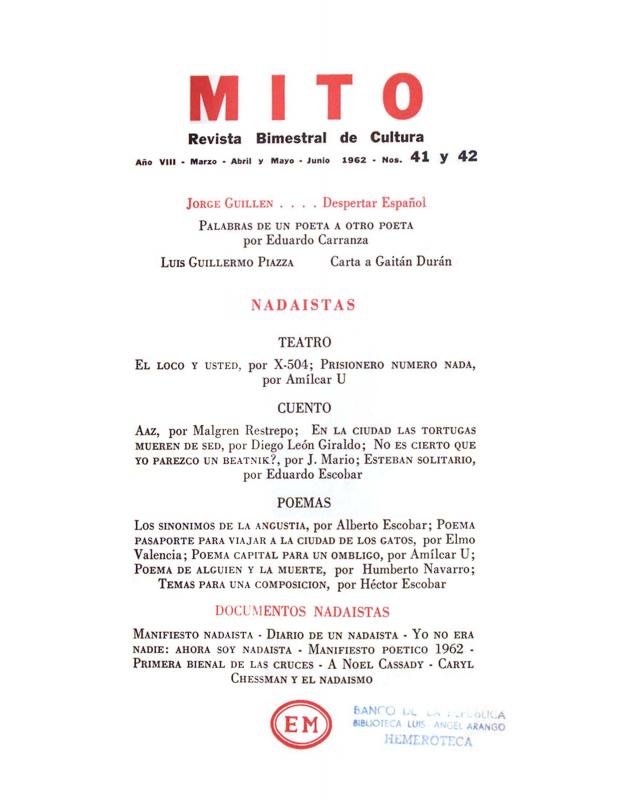The poet and political thinker Gonzalo Arango (1931–1976) illustrates the political and aesthetic aspect of the destruction wrought by the trend called Nadaísmo (1958–70). Violence was viewed by this avant-garde much as it was by its forerunners in Europe in the early twentieth century—that is, as the driving force behind art and life. This was an existential response to the circumstances of the times, to the historical hegemony massed in support of the economics of postcapitalist ideology. This was a time when war, money, science, and power were more closely aligned than in any previous civilization, a time when art appeared to have no place and therefore had been redefined ever since the nineteenth century, spurred on by survival. Therefore, like other twentieth-century western avant-garde art movements, Nadaísmo was reacting against the Enlightenment, the light of “reason,” of positivist “credulity,” and “hope,” and against its consequences in the “abject materialism” of bourgeois traditions.
At that time, Colombia was still in thrall to the “conformism,” “mediocrity,” and “intolerance” that had defined the country and its “dubious consciences” for over a century. As a postwar avant-garde generation, the nadaístas felt that they had been born into a world that had lost its spiritual compass. They looked at their country and criticized the indifference of its youth, the manipulation of the media by “the owners of public opinion,” and the “terror of empty rhetoric and molders of morality.” Nadaísmo was under no illusions and ruled out the possibility of any fundamental change in the authority of the church and the state that effectively governed Colombia; a fierce regime that Arango accused of misleading the public by floating the mirage of “peace” and “order.” The nadaístas were skeptical and responded to the government’s decadence with sordid messages and parodies, challenging the status quo and exalting taboos—leisure, drugs, and sex—to disrupt the order of traditional Colombian middle class society.
The nadaístas were in constant contact with contemporary visual artists, and worked together with them on certain projects, as in the case of the Festival de Arte de Vanguardia [Avant-garde Art Festival] in Cali (1965) and the Bienal de Las Cruces [Las Cruces Biennial] in Bogotá (1962).
Gonzalo Arango was a prominent figure in Colombian literature; his written work has been discussed more than it has been read, and he gained great notoriety in the 1950s and 1960s as a result of his unspeakable role piloting the “chalupa pandillesca” [gang’s canoe] of nadaísta thoughtlessness, embarking sarcastically and with pleasure on a number of acts of sabotage. In defiance of the national tradition of decorum, the group made history with their aggressively scandalous antics. Their skepticism and freely expressed views on the dignity of man and the power of art—and against the dictatorship of the church and the state, capitalist business, and the national poetic tradition—led to exile and jail for Arango. He left an extensive body of work that includes poetry, journalism, essays, stories, and theatrical works.
A collection of nadaísta documents were published in a special issue of Mito [Myth] magazine (1955–62) devoted to this group in the section called “Documentos Nadaístas” [Nadaísta Documents]. This document should be considered together with the “Primera Bienal de Las Cruces” [see doc. no. 1131727]; as well as the texts about the Nadaístas “A Noel Cassady” [doc. no. 1131808] and the “Manifiesto poético 1962. Explosiones radioactivas de la poesía nadaísta” [doc. no. 1131695].



